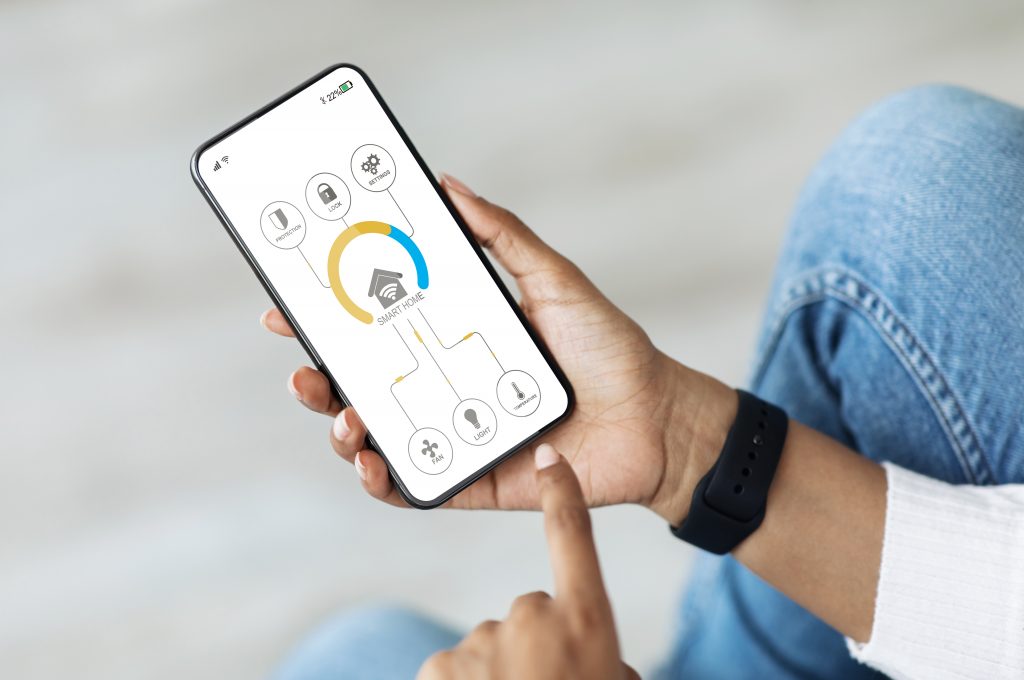Have you ever broken a leg? You quickly identify how difficult it is to navigate stairs, operate your car, or maneuver in tight spaces like bathrooms and elevators. It is so easy to take what you have for granted. Some people live every day tackling aspects of life you never even think about.
It is a rare person who doesn’t rely on others for goods and services. We rely on stores for food and clothing, doctors for health care, schools for education, companies for employment, social services for child or elderly care… the list goes on and on. Day to day life can be difficult for anyone, regardless of ability. For someone who owns one of these businesses to hinder a person with a disability by not making simple allowances is discrimination.
Who determines what is and what is not discrimination? Do the rules apply to brick and mortar businesses only or are websites and mobile presences also included? What decisions are being made in the courts? What does it take to make a business accessible?
What is the ADA?
Passed in 1990, the Americans with Disabilities Act (ADA) aids in ensuring that people with disabilities can receive the same access to employment, goods, and services as those without.
Section 36.201(a) contains the general rule that prohibits discrimination on the basis of disability in the full and equal enjoyment of goods, services, facilities, privileges, advantages, and accommodations of any place of public accommodation.
Full and equal enjoyment means the right to participate and to have an equal opportunity to obtain the same results as others to the extent possible with such accommodations as may be required by the Act and these regulations. It does not mean that an individual with a disability must achieve an identical result or level of achievement as persons without a disability. For example, an exercise class cannot exclude a person who uses a wheelchair because he or she cannot do all of the exercises and derive the same result from the class as persons without a disability. [1]
The ADA has been revised a handful of times over the years, particularly to expand and clarify the definition of “disabled.” If you don’t mind muddling through legalese and want specifics, you can read the full regulations at ADA.com.
What disabilities does the ADA cover?
Much discussion has gone into determining what makes a person qualify as “disabled” under the ADA. It has broadened over the years in order to protect a wider range of disabilities. Their definition has three “prongs”.
Sec. 12102. Definition of disability
The term “disability” means, with respect to an individual
(A) a physical or mental impairment that substantially limits one or more major life activities of such individual;
(B) a record of such an impairment; or
(C) being regarded as having such an impairment. [2]
The definition is intended to be broadly interpreted. It allows for some wiggle room in proving a disability by including those who are treated as if they are disabled.
Who does it apply to?
The regulation is split into two groups. Title II pertains to state and local governments and Title III covers Public Accommodations and Commercial Facilities. The ADA defines commerce as:
…travel, trade, traffic, commerce, transportation, or communications
(A) among the several States;
(B) between any foreign country or any territory or possession and any State; or
(C) between points in the same State but through another State or foreign country.
The following private entities (if their operations affect commerce) are considered public accommodations.
(A) an inn, hotel, motel, or other place of lodging, except for an establishment located within a building that contains not more than five rooms for rent or hire and that is actually occupied by the proprietor of such establishment as the residence of such proprietor;
(B) a restaurant, bar, or other establishment serving food or drink;
(C) a motion picture house, theater, concert hall, stadium, or other place of exhibition entertainment;
(D) an auditorium, convention center, lecture hall, or other place of public gathering;
(E) a bakery, grocery store, clothing store, hardware store, shopping center, or other sales or rental establishment;
(F) a laundromat, dry-cleaner, bank, barber shop, beauty shop, travel service, shoe repair service, funeral parlor, gas station, office of an accountant or lawyer, pharmacy, insurance office, professional office of a health care provider, hospital, or other service establishment;
(G) a terminal, depot, or other station used for specified public transportation;
(H) a museum, library, gallery, or other place of public display or collection;
(I) a park, zoo, amusement park, or other place of recreation;
(J) a nursery, elementary, secondary, undergraduate, or postgraduate private school, or other place of education;
(K) a day care center, senior citizen center, homeless shelter, food bank, adoption agency, or other social service center establishment; and
(L) a gymnasium, health spa, bowling alley, golf course, or other place of exercise or recreation.
Are websites and mobile included?
Technology has been progressing at an astounding rate and has become ubiquitous in our daily lives. E-mail, texting, and the internet have made communication faster and easier for most of the population. For others, however, technology may only add complexity.
Imagine you are blind or find reading incredibly difficult. A simple-sounding task such as checking your email or finding the nearest Starbucks suddenly becomes a challenge. You would need feedback of some sort just to know where your mouse pointer is on the screen. Navigating through menus and down rabbit holes of links could get messy. What if you couldn’t hear? Instructional videos, online classes, and the like would be almost useless without transcription or a translator.
At the moment, the ADA isn’t targeting non-government websites or mobile application technology. There has been talk about making revisions to include them. For example, one proposed revision requires that websites that offer public services such as education, commerce, entertainment, or recreation, are included. However, an executive order from the President released late January 2017 could postpone its acceptance. The order titled “Reducing Regulation and Controlling Regulatory Costs” requires that any new regulation should include the repeal of two existing regulations.
The first federal trial on website accessibility
The lawsuit Gil v. Winn-Dixie, filed in June 2017, demonstrates that though non-government websites aren’t explicitly included, they most definitely are not excluded [3] .The blind plaintiff Joan Carlos Gil described difficulty with finding store locations, getting prescriptions refilled, and accessing digital coupons. The site did not interface appropriately with JAWS (a navigational system for the disabled) correctly to allow navigation to subcategories. This made 90% of the options on the site inaccessible.
The courts ruled that the Winn-Dixie website violated the ADA by being inaccessible to visually impaired users. As part of the injunction, Winn-Dixie must make their website (even parts done using a 3rd party) accessible for computer, laptop, tablet and smartphone users. The website must conform to WCAG 2.0 standards and be tested for compliance every 3 months.
If Winn-Dixie had developed their site with accessibility in mind, they could have avoided legal fees, bad press, a time consuming trial, and angry customers.
How will it affect you?
As with most decisions, you should evaluate your user base and business. How will your implementation, or lack thereof, impact them? Does it add value to your product? What risks are you taking by not considering accessibility? The 2015 American Community Survey estimates that 39,996,900 out of 317,480,100 of the United States population reported a disability. Are you willing to alienate potentially 12.6% of your user base?
Ensuring accessibility won’t only benefit your users. It will put you ahead of the curve and possibly protect you from legal action. Laws and regulations are only recently catching up to the tech explosion.
Litigation in the federal court involving ADA Title III is on the rise. Last year the number of cases increased 37% from 4,789 to 6,601. While websites have been a target over the past several years, Techcrunch postulates that apps may be the next disability lawsuit target.
Do you have a physical location?
Many of the lawsuits pertaining to websites and the ADA hinge on whether the company has a physical location or if it operates solely in cyberspace. Many courts have interpreted the portion of the ADA that specifies a business must be a “place of public accommodation”[1] to mean that there must be a physical location[4] in which access or enjoyment is inhibited.
Are there other ways your users can access the exact same information and services?
The ADA’s expectation is that users who are disabled “have an equal opportunity to obtain the same results.” It does not mean that an individual with a disability must achieve an identical result or level of achievement as persons without a disability.” This means that if the same information and services available on your site can be found via a phone number[5] or through a physical location[6], your business would likely still be considered accessible. If your website is accessible 24-7, you should consider mirroring those services through other venues 24-7 as well.
What accommodations should be made to assist users?
We’ll cover that in a future post. Subscribe to our email list to make sure you don’t miss out!
In Summary
The ADA was created to allow everyone access to the same goods, services, and employment opportunities, whether they are disabled or not. It currently specifies rules for brick and mortar public accommodations and both virtual and physical and aspects of state and local government services. Over the past few years, there has been an increase in lawsuits surrounding cyberspace accessibility. Because the the ADA has yet to specify websites or mobile presences, court rulings have been varied.
With technology being so prevalent in society, the ease in which businesses can be accessible, and the increase in legal actions surrounding the issue, it won’t be long until accessible websites and apps will be the norm, if not required by law. If you need assistance building an accessible product or making your current one accessible, we can help!



